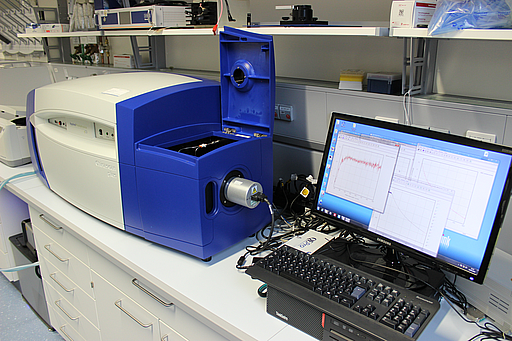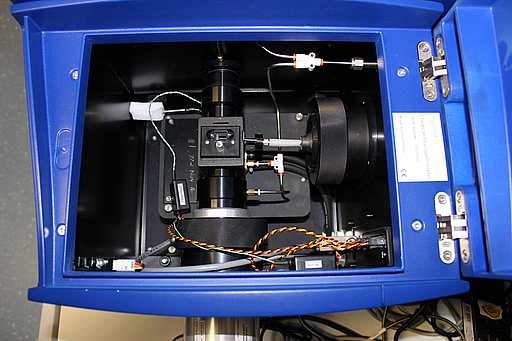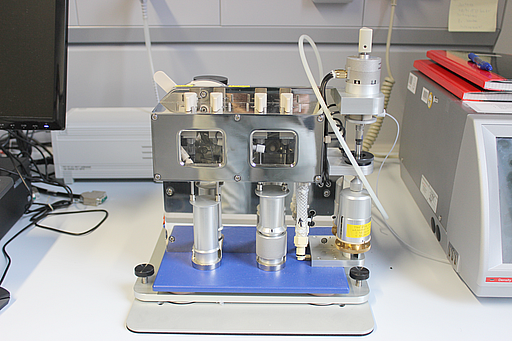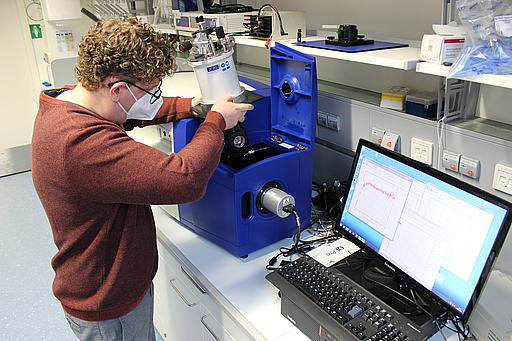
Understanding protein folding...
...at very hot and very cold temperatures, in the presence of co-solvents, in induced (bio-)chemical reactions, with amino acid exchange, with spin or fluorescence labeling, in shock freezes etc.
The CD spectrometer is mainly used for the thermodynamic and kinetic characterization of protein folding. This characterization is used e.g. for the interpretation of protein-water dynamics measured by THz spectroscopy. Furthermore, this spectrometer can be used to study protein folding in the presence of co-solvents at very low and very high temperatures to understand the influence of the solvent on protein folding.

Possible applications:

The stopped-flow unit for induced reactions has to be installed separately. Please contact us.
CS/SF Stopped flow unit with sequential mixing:

Laboratory Manager -
Spectroscopy
Room:
ZEMOS 0.83
Phone: +49 234 32 -
29554
E-Mail
Technician -
Chemistry, Spectroscopy
Room:
ZEMOS 0.87
Phone: +49 234 32 -
19050
E-Mail